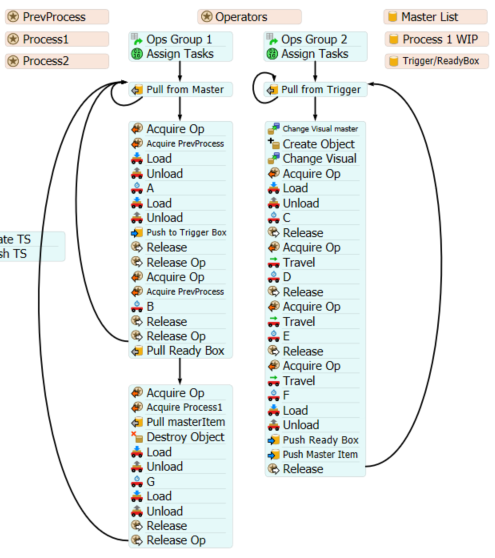I am basing this as a follow up to Jordan's answer to this question: Line balance with flexsim. - FlexSim Community
I have a fairly sizeable model where each token represents an operator and loops through a set of task sequences. However the way I have it set up right now is impossible to re-assign work content to different operators through an experimenter because I would have to make process flow changes.
I thought of using Task Sequence Lists and somehow triggering which operator pulls what task based on a chosen parameter. However this would mean I need to break all tasks into smaller sequences within/before which operators get acquired and released.
However, this acquiring and releasing with multiple operators tends to cause hold ups when multiple tokens are requesting to acquire an operator and a processor. I quickly start to see situations where one token has a particular operator but is waiting for acquiring a station while another token has acquired that station and is waiting to acquire the same operator. To solve this, I need to come up with a resource "dump" flow where I have a max wait timer on the acquire activity which then dumps the acquired resource, allowing any other tokens in the process to move forward. This does not seem elegant.

So I wanted to ask, are there any example models on how I could achieve re-assigning tasks via the experimenter?
Ideas I have had, none of them are 100% thought through or tried:
- Task Sequence list
- "Send" the token to a subflow or a separate task flow, and restore its original location after task is complete - this may run into the same acquire and release issue I mentioned
- Create identical task sequences for each operator with all the delays controlled via parameters. Change cycle time to 0 for the delays that an operator is not meant to perform. This would mean too many parameters, more than I could possibly manage in the future
Any recommendations are helpful! Thank you



